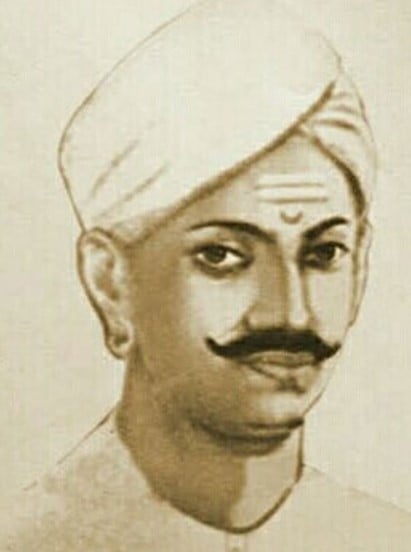PERSONAL INFORMATION
Profession: Soldier
Famous for: Playing a key role in the outbreak of the Indian rebellion of 1857
Date of Birth: 19 July 1827 (Thursday)
Birthplace: Nagwa, Ballia district, Ceded and Conquered Provinces, Company India
Age (at the time of death): 30 Years
Zodiac sign: Cancer
Nationality: British Indian
Hometown: Nagwa, Ballia district, Ceded and Conquered Provinces, Company India
Religion: Hinduism
Caste: Brahmin
Age: 30 Years
Check Out Other Celebrities Biography
- punit pathak biography
- amruta fadnavis biography
- kabir khan biography
- amrita arora actress biography
- leander paes biography
PHYSICAL STATISTICS
Eye Colour: Black
Hair Colour: Black
FAMILY & RELATIONSHIPS
Marital Status (at the time of death): Unmarried [2] DNA
Wife/Spouse: N/A
Parents: Father – Diwakar Pandey (peasant) Mother – Abhay Rani
Siblings: Mangal Pandey’s sister died in the famine of 1830. [3] School Chalao
Father: Diwakar Pandey
Mother: Abhay Rani
OTHER INFORMATION
Allegiance: East India Company
Service/branch: Bengal Army
Years of service: 1849-1857
Rank: Sepoy
Unit: 34th Regiment of Bengal Native Infantry
Date of Death: 8 April 1857
Place of Death: Barrackpore, Calcutta, Bengal Province, Company India
Death Cause: Execution by hanging [1] The Free Press Journal
INTERESTING BACKGROUND INFORMATION
Mangal Pandey, a British-Indian soldier, has emerged as a pivotal figure in the narrative of the Indian rebellion of 1857, a significant movement against colonial rule in India. Serving as a sepoy in the 34th Bengal Native Infantry regiment of the British East India Company, he enlisted in the Bengal Army in 1849, beginning his military career as a private in the 5th Company. His actions on 29 March 1857 at Barrackpore would soon become legendary. On that fateful day, Lieutenant Baugh, the adjutant of his regiment, received alarming reports of a rebellion brewing among his men. Among those stirring unrest was none other than Mangal Pandey, who, reportedly under the influence of the narcotic Bhang, brandished a loaded musket, threatening to shoot Europeans and inciting his fellow soldiers to revolt against their colonial masters.
The disturbance at Barrackpore escalated quickly. General Hearsey, the commanding officer, was informed of the situation and promptly arrived on the scene, accompanied by two officers. Upon his arrival, he ordered his men to subdue Pandey, warning that disobedience would lead to dire consequences. As the officers approached him, Pandey, in a moment of defiance, pressed the muzzle of his musket against his chest and pulled the trigger with his foot, igniting his regimental jacket and causing grievous injuries. This act of rebellion marked a significant moment in the growing discontent within the ranks of the Indian soldiers.
In the week following this explosive incident, as Mangal Pandey recovered from his injuries, he faced a court trial that would seal his fate. In his defense, he claimed that he acted independently, citing the intoxicating effects of the substances he had consumed as a mitigating factor. Despite his assertions, the British authorities sentenced him to death, and on 8 April 1857, he was executed, with fellow conspirator Jemadar Ishwari Prasad hanged shortly thereafter. The motives behind Pandey’s actions remain shrouded in ambiguity; during his trial, he echoed sentiments of rebellion, declaring that the greased cartridges of the new Enfield P-53 rifle threatened to compromise the religious beliefs of Hindu and Muslim soldiers alike. This fueled growing mistrust and resentment toward the British, igniting an uprising that soon spread from Barrackpore to Meerut, Delhi, Cawnpore, and Lucknow.
Mangal Pandey’s legacy did not fade with his execution; instead, it became a symbol of resistance against colonial oppression. His actions catalyzed significant changes in the British Indian Army, leading to modifications in the greasing of cartridges to alleviate the religious concerns of Indian soldiers. The British East India Company’s grip on India began to weaken as the rebellion gained momentum, eventually resulting in a transfer of power to Queen Victoria. In honor of his sacrifices, the Government of India commemorated Mangal Pandey’s contributions to the struggle for freedom by issuing a postal stamp in 1984 and establishing the ‘Shaheed Mangal Pandey Maha Udyan’ memorial at Barrackpore, the very site of his courageous stand. His story was further immortalized in popular culture with the 2005 film “Mangal Pandey – The Rising,” where Bollywood actor Aamir Khan portrayed him, ensuring that the saga of this brave sepoy continues to inspire future generations.
—
Note: All biographical information compiled from publicly available sources.
